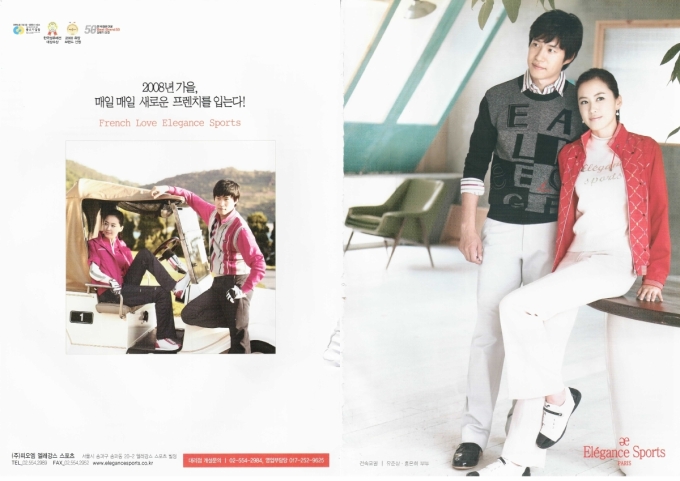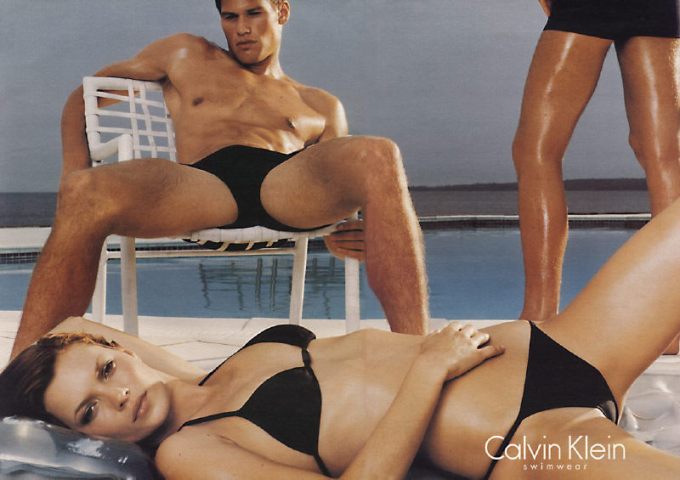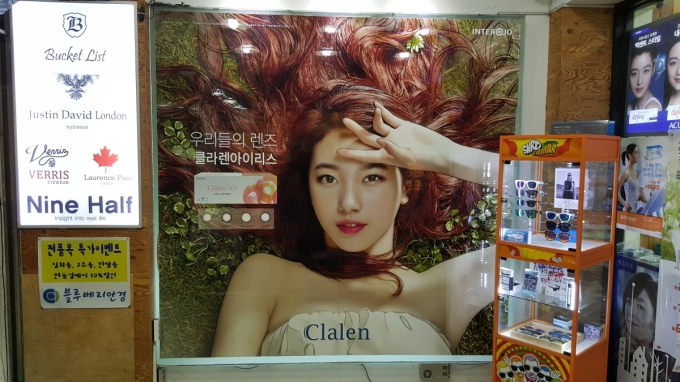Tonight has been interpreted as an uplifting, carefree song about female friendship, maybe even about a lesbian awakening. So why is the MV so male-gazey?
 All screenshot sources: Youtube.
All screenshot sources: Youtube.
Introduction: The Rise and Fall and Rise of Spica
Released in August 2013, Tonight by Spica is the perfect short summer song. It’s fun, breezy, and simple to understand for a Korean learner too. Just take a listen for yourself:
Though most K-pop songs don’t age well for me, I do still soo love the music and vocals of this one. But its sales were poor, and it won no prizes on music shows. It received few substantive reviews. Then the same happened again with You Don’t Love Me, which came out in January 2014. Crestfallen, I lost track of Spica after that, but I remember being further disappointed by their misguided US debut that summer, then the news in November 2015 that a manager of their former entertainment company was being sued for embezzlement, which derailed their planned comeback. Add that they haven’t uploaded a video to Youtube in over a year, then I started this post half-expecting they’d disband before I finished it.
Spica, it seems, have always been plagued with bad luck.
But there’s hope on the horizon. I soon learned that they’d switched entertainment companies in December, and that they’d quickly followed that with the announcement that a mini-album would be released in April, later cancelled in favor of the release of a full album in June. Also, while their Twitter, Facebook page, various Instagram accounts, and (Korean) fan cafe were only being updated every few days, they were still being updated. An hiatus on those updates since April was cause for alarm, but it was likely only because the group is very busy working on the album.
Sure enough, soon after I wrote that they’ve since resumed posting, and have just reconfirmed their comeback and released new member photos. So, I’m optimistic that they’ll announce a firm release date any day now. Which makes them a perfect choice for my own return to writing about K-pop.
Who could write a simple review after watching that MV though?
 Source: Guerrilla Feminism.
Source: Guerrilla Feminism.
There’s only so much that can be said about the generic lyrics of the song, or added to what other reviewers have already written about the dreamy, memory-like atmosphere. Who has time for such banalities, when the MV is so sensual, but also soo blatantly aimed at heterosexual men? When the first half mostly consists of the Spica members lying on their backs in bikinis or tight clothes, the camera constantly lingering on their breasts? And much of the rest, just that lingering gaze, with only occasional shots of the actual faces of the various body parts’ owners?
I’m serious. For teaching the concept of the male gaze, and the rights and wrongs of objectification, this MV is the perfect K-pop example.
 (0:31)
(0:31)
 (0:53)
(0:53)
No, I’m not a prude, I don’t think those are negatives (necessarily), and I’m not complaining. No way in hell, did I plan to spend six weeks on researching the male gaze before I got a post out either.
But I felt I had an obligation to discuss what no-one else was. Because when I first saw the MV three years ago, it was on my phone while I was on the subway; I had to stop watching, lest other commuters think of me as just another typical, sweaty uncle fan. When I showed the MV to a coworker to get a second opinion, he burst out laughing at how shameless it was; when I showed it to my wife, she just rolled her eyes. When I went online for fourth and fifth opinions though…?
Of scenes like the above, almost every other reviewer and commenter only mentions the ice cream one, if at all; instead, they talk about the strong vibe of sexual freedom they get from the MV, and/or the lesbian undertones. For instance, Alexandra Swords at Music Matters:
[The MV is] just plain fun to watch. It’s also incredibly sexy, the sensual movements, the outfits, the skinship . . . all of it contributes to a great idea of personal liberation, including sexual freedom and comfort with that sexual freedom. It’s great because very few music videos period, let alone the ones in Korea, express that not only is it okay to be a sexual creature, but that being so is not strange or special, it just is and we can just accept it with ease and comfort as an aspect of the world in which we live.
And commenters at Seoulbeats, after reviewer Laverne originally mentioned she found the sexual undertones of the ice cream scene unnecessary and distracting:
 All of which is still cool of course: we’re all free to interpret the MV however we like, and a male gaze isn’t mutually exclusive with their reading of it. I should have made more of an effort to look for Korean reviews too.
All of which is still cool of course: we’re all free to interpret the MV however we like, and a male gaze isn’t mutually exclusive with their reading of it. I should have made more of an effort to look for Korean reviews too.
But…sexual freedom? Tasteful lesbian undertones?
I’m just not seeing them. If a lesbian coming-of-age story was the intention, then it seems poorly executed at best, as I can identify only two scenes that hint at potential romantic interest between the members, and just barely at that. (Frankly, I think it’s just wishful thinking really. And, just off the top of my head, think Because of You by After School is a much, much better K-pop example.) In the absence of that narrative though, what I’m seeing in its place is the presentation of a very passive, come-hither version of female sexuality, much like that which already overwhelmingly dominates the media.
Again, that’s not necessarily bad, in the right context. Nor, as Womantic’s and ChencingMachine’s comments demonstrate, are the resulting scenes necessarily for the exclusive pleasure of heterosexual men. Yet while a lesbian appreciation of this MV is no less valid than a male heterosexual one, I still think it’s only incidental.
But I’m not a lesbian. As you’ll see, I still have lots to learn about the (heterosexual) female and lesbian gaze too. And, whatever your sex or sexuality, I can’t and won’t presume to lecture you that any feelings of sexual empowerment to be gained from the MV are simply a form of false consciousness either. Instead, let me just present my own biases and intellectual baggage first then, to show you why I interpret the MV the way I do.
That makes for a very, very long post, almost a presentation really, which readability dictates that I split into three. Also, for an uneasy segue into a discussion of men and women in advertising next, to be continued in Part 2, and ironically not returning to the MV again until Part 3. But if that’s what it takes to demonstrate the very narrow vision of female sexuality being presented by the MV, and of male tastes in turn, then so be it.
Hopefully, you’ll be too intrigued by the hundred or so images to notice the length anyway. And, ultimately agree or disagree with my interpretations, maybe we’ll still have a fun discussion about the male gaze and/or Tonight too, and both learn a lot in the process.
Here goes…
The Male Gaze: A Gender Advertisements Perspective
 Source, right.
Source, right.
Whatever your experience with analyzing advertisements, you can appreciate that the sizing and placing of people in them is a fundamental part of photographers’ and designers’ jobs. With that in mind, consider these images of Prince Charles and the late Princess Diana:
 Most people wouldn’t think twice about them. Unless, they already knew that Diana was actually the same height as Charles, or even slightly taller:
Most people wouldn’t think twice about them. Unless, they already knew that Diana was actually the same height as Charles, or even slightly taller:
 Why make Charles appear taller? Lisa Wade at Sociological Images explains:
Why make Charles appear taller? Lisa Wade at Sociological Images explains:
This effort to make Charles appear taller is a social commitment to the idea that men are taller and women shorter. When our own bodies, and our chosen mates, don’t follow this rule, sometimes we’ll go to great lengths to preserve the illusion.
Is that social commitment also operating in these Korean advertisements? You be the judge:
 Now, those examples were pretty obvious. However, that social commitment to men’s greater height can be said to be part of a wider commitment to presenting conventional, in many ways unequal gender roles by the media. Which may sound like hyperbole, but literally just about any survey looking at how the sexes are portrayed can confirm.
Now, those examples were pretty obvious. However, that social commitment to men’s greater height can be said to be part of a wider commitment to presenting conventional, in many ways unequal gender roles by the media. Which may sound like hyperbole, but literally just about any survey looking at how the sexes are portrayed can confirm.
In advertisements, that commitment is usually achieved in much more subtle ways than simply giving high stools to short men though. Fortunately for us, the late Erving Goffman outlined many of those ways in Gender Advertisements (1979), and his framework has been considerably expanded upon and modified by scholars since.
Concentrating on the two ways most relevant to the Tonight MV here, the first is by positioning men and women (and races) differently, which comes under the “Relative Size” category in Goffman’s framework. (Note that in addition to being positioned differently, they are frequently doing different things and/or have different jobs too, which comes under “Function Ranking”). For example:

 Source, left: Korea Times, 25/06/2009; see Korean Sociological Image #8 for a discussion.
Source, left: Korea Times, 25/06/2009; see Korean Sociological Image #8 for a discussion.
 None of those examples are particularly objectionable in themselves, nor is there a real case to be made that the teams behind them were deliberately or even subconsciously sexist: there could have been any number of legitimate aesthetic reasons and other considerations which came into play when they placed the men and women (and Koreans and Caucasians) the way they did. It’s also true that I deliberately selected all the advertisements in this post to make certain points, which in turn are necessary generalizations; of course you see men standing in the back sometimes, and so on. That said, do surveys of multiple advertisements, and, for whatever reasons, men tend to be front and center more often than women, and tend to have better jobs and/or take more active roles than the women behind them.
None of those examples are particularly objectionable in themselves, nor is there a real case to be made that the teams behind them were deliberately or even subconsciously sexist: there could have been any number of legitimate aesthetic reasons and other considerations which came into play when they placed the men and women (and Koreans and Caucasians) the way they did. It’s also true that I deliberately selected all the advertisements in this post to make certain points, which in turn are necessary generalizations; of course you see men standing in the back sometimes, and so on. That said, do surveys of multiple advertisements, and, for whatever reasons, men tend to be front and center more often than women, and tend to have better jobs and/or take more active roles than the women behind them.
In that vein, take a look at these two:
 In the left (technically only half of the advertisement), of course the mother is taller and of a higher social status than her young daughter. Also of course, there’s no implication that the teenage boy in the advertisement on the right is of a higher social status or in any other way superior to the teenage girls in any way simply because he’s standing while they’re sitting.
In the left (technically only half of the advertisement), of course the mother is taller and of a higher social status than her young daughter. Also of course, there’s no implication that the teenage boy in the advertisement on the right is of a higher social status or in any other way superior to the teenage girls in any way simply because he’s standing while they’re sitting.
Look at multiple advertisements however, and it turns there’s a lot more ads like the one on the right than vice-versa. Or, of ones that elevate the men above the women in some other way:


 Alternatively, if the men themselves are sitting, then the women end up on lower furniture (remember the stools earlier?), in beds, or even on the floor or ground:
Alternatively, if the men themselves are sitting, then the women end up on lower furniture (remember the stools earlier?), in beds, or even on the floor or ground:
 Source: Giordano. See also: Shin Min-a Shows Us How to Pose Like a Woman.
Source: Giordano. See also: Shin Min-a Shows Us How to Pose Like a Woman.
 Source, above and below: The Fashion Spot.
Source, above and below: The Fashion Spot.
 This is the part of second category of Goffman’s to bear in mind for the MV, which he termed the “Ritualization of Subordination” (but with obvious overlaps with “Relative Size”). He explained it thus:
This is the part of second category of Goffman’s to bear in mind for the MV, which he termed the “Ritualization of Subordination” (but with obvious overlaps with “Relative Size”). He explained it thus:
Although less so than in some, elevation seems to be employed indicatively in our society, high physical place symbolizing high social place. (Courtrooms provide an example.) In contrived scenes in advertisements, men tend to be located higher than women, this allowing elevation to be exploited as a delineative resources. A certain amount of contortion may be required. Note, this arrangement is supported by the understanding in our society that courtesy obliges men to favor women with first claim on whatever is available by way of a seat. (p. 43)
And in particular:
Beds and floors provide places in social situations where incumbent persons will be lower than anyone sitting on a chair or standing. Floors are also associated with the less clean, less pure, less exalted parts of the room – for example, the place to keep dogs, baskets of soiled clothes, street footwear, and the like. And a recumbent position is one from which physical defense of oneself can least well be initiated and therefore one which renders very dependent on the benignness of the surround. (Of course, lying on the floor or on a sofa or bed seems also to be a conventionalized expression of sexual availability) The point here is that it appears that children and women are pictured on floors and beds more than men. (p. 41)
A note of caution. In lectures in the past, I’ve explained that Korea provides an interesting counterpoint to such interpretations. As in this part of the world, age and status trumps everything:


 Source, left: Etsy.
Source, left: Etsy.
And indeed maybe it does. But after rereading the original book, I found that Goffman had already indirectly addressed this:
An interesting contrast is to be found in turn-of-the-century portrait poses of couple [example above], wherein the effect was often achieved of displaying the man as the central figure and the woman as backup support, somewhat in the manner of a chief lieutenant. (p. 40)
Which is to say, it’s important to bear advertisements’ contexts in mind, and not interpret them dogmatically. But whether they’re Korean or from Goffman’s native Canada, examples like these seem to be the exceptions that prove the general rule.
Another thing to bear in mind is one of the biggest changes since Goffman’s day: that fewer and fewer couples and mixed groups are depicted in advertisements. Despite that, women are still less likely to be standing in them than men:

 Source: S♡NE | INDESTRUCTIBLE.
Source: S♡NE | INDESTRUCTIBLE.
 Source: 퍼펙트 월드.
Source: 퍼펙트 월드.
The sides of buses, I’ve noticed, are frequently used for full-length shots of people on their sides. It’s just that those people rarely seem to be men:
 Sources, edited: Swagger.
Sources, edited: Swagger.
And finally, some examples of women on the floor, in beds, and/or lying down. Which, like Goffman said, are considered to be expressions of sexual availability:
 Source: Tcafe.net.
Source: Tcafe.net.



 Source: IsM, K-pop in Greek.
Source: IsM, K-pop in Greek.
 Sources: FM Korea; Imgur. Ironically, there was some controversy about the one on the left. But only because of its supposed resemblance to BDSM.
Sources: FM Korea; Imgur. Ironically, there was some controversy about the one on the left. But only because of its supposed resemblance to BDSM.
This next example with Bae Su-ji for Clalens contact lenses below is particularly interesting. When I showed it to a female friend, who’s very au fait with overthrowing the patriarchy, I pointed out that it looked like I was hovering over her as we lay together in some sunny, secluded glade. (Su-ji that is, not my female friend; let’s not go there.) That didn’t occur to her at all though, and instead she admired what the advertisers had done with her hair, the black lines serving to highlight the clarity of vision brought about by the contact lenses (although in hindsight, I think the intention was to highlight that they’re color lenses):
 I include it then, partially as an example of where my background is possibly clouding my judgement. Also, as a reminder that I’m not the target audience of most of the advertisements I critique.
I include it then, partially as an example of where my background is possibly clouding my judgement. Also, as a reminder that I’m not the target audience of most of the advertisements I critique.
But still: with this ad, I think my friend wasn’t seeing the forest for the trees.
Because consider the similar one in the middle below too. At that more usual scale, only a blogger with a bone to pick would notice the black lines at all. Add the slightly scared expression on her face, which seems out of place for a contact lens ad, and I’m right back to my original interpretation. Neither exactly scream “Now that I can see properly, I can finally do shit and get on with my life!” either, which is why I much prefer the one on the left. (Even Seol-hyun’s on the right is an improvement.)
 Apologies for the reflection of some ugly bald guy in the picture on the right.
Apologies for the reflection of some ugly bald guy in the picture on the right.
But okay, so what? So we see many more women than men in beds and on floors in advertisements, frequently in sexualized poses. Is that problematic?
Well, if we put aside for a moment that not every ad needs to be sexualized, and that when it is, it’s usually the sexualization of women by and for heterosexual men? Then not so long ago, I would have said no. Not necessarily.
Yes, I know I say that word a lot. But hear me out.
In my lectures, I used to point out that basic biology meant that heterosexual men found women in beds more sexually attractive than vice-versa. Whereas you have lots of time, energy, and most importantly no kids, I would wistfully explain to my 20-something audience members, so you make it a point of personal pride to try new and exciting sex positions everyday, the reality is that the missionary position is overwhelmingly the most popular male-female one. (And besides which, if we’re talking about penis-in-vagina, all those new and exciting sex positions are all just variations of the same six basic positions anyway.) Ergo, if sex sells, and, rightly or wrongly, sex is always going to be used to sell, then that sexual difference is always going to be reflected in advertising.
To reinforce that point, and get some laughs, I would show some photos of men parodying women’s typical poses:
 Source: English Russia.
Source: English Russia.
 Source: kyliedpeterson.
Source: kyliedpeterson.
But sometimes after the lectures, women would point out that the men above weren’t as (conventionally) attractive as the women they’re mimicking. And they had a point. So too, if they’d asked how come I’d just enthralled them with numerous images of scantily-clad women in beds or lying down, for which they were eternally grateful, yet failed to provide any examples with men to prove my original point? Like some from two Instagram collections recently featured at Bored Panda say, which have a much wider range of guys than normal too?
 Ewww, men on their backs. How unmanly and unattractive. Source: @brosbeingbasic; left, right. One NSFW image follows.
Ewww, men on their backs. How unmanly and unattractive. Source: @brosbeingbasic; left, right. One NSFW image follows.
What they really should have done though, is told me to just shut the hell up. Because what the fuck would I know about what poses turn women on?
I like to think I know a little. This blog is about sexuality after all. I do have lots of books about sexuality in my bookshelves to impress guests at my cocktail parties with, and have even read some of them too. Obviously, I have no qualms about talking explicitly about sex. Obviously, I do so with my wife and did with my former partners. Probably, you can guess, that lack of inhibitions extends to conversations with my friends too. (Consider that a heads-up, if any readers want to hang out.)
But had I really talked to my female friends about what turns them on? Exactly what turns them on? Had I really talked to enough heterosexual women, or read enough about female sexual desire written by them? Could I really stand there as a cisgender, heterosexual guy and tell heterosexual women that I know they aren’t as attracted to men in beds as men are to women, which is why we don’t see men in beds so much in ads?
No.
Instead, it took the following image to make me finally realize my utter foolishness. Seen back while I was still naively expecting this post to just be a normal review, this image is a big reason for the way it developed the way it did. Because just between you and me, I can see the attraction…
 Source: Paper.
Source: Paper.
I’m sure it would have been more to the point to post a picture of a eager, expectant-looking guy in bed, with a much prouder erection; alas, it’s that picture that really, really does it for me. I mean did it for me. Enlightened me I mean.
Anyyyway…
If it doesn’t enlighten you personally though, then here’s some eye-opening links I was also reading at the time, which provided the thousands of words of background that picture told me:
- Explainer: what does the ‘male gaze’ mean, and what about a female gaze? (The Conversation; make sure to read the comments also)
- Gaze Upon Me, and Despair!: Tropes vs. Women in Video Games, S2E2 (The Learned Fangirl)
- How music videos challenged the male gaze in 2015 (Dazed)
- How is this painting ‘pornographic’ and ‘disgusting’? (The Guardian)
- ‘Neighbors 2’ is a middle finger to anyone who thinks feminism can’t be funny (Fusion)
- Hollywood Men: It’s No Longer About Your Acting, It’s About Your Abs (Jezebel)
- The Male Gaze vs. The Female Gaze (CinemaVerite)
- NSFW: See Images From “Bare Men,” A New Photo Book on Male Nudity (Paper)
- A New Tumblr Calls Attention to “Headless Women” in Film & TV Marketing (Bitch, Feministing)
- NSFW: 10 Images That Take The Female Nude Back From The Male Gaze (Bust; my Twitter and Facebook conversations about them)
- Empowered Young Women Star In These Portraits Of Chinese Girlhood (The Huffington Post)
- How did ‘Playgirl’ magazine go from feminist force to flaccid failure? (Fusion)
- An Earl in the Streets and a Wild Man in the Sheets: Tarzan and Women’s Sexuality (Bitch)
That said, of course there’s still many differences in what heterosexual men and women find sexually attractive in the other; it’s just that I’m no longer convinced that lying in bed (etc.) is one of them. And if I’m right, that social commitment to literally keep women in their place seems to be the biggest reason for the discrepancy in the media.
Especially when, if pandering to the male gaze is the modus operandi, there are many more active alternatives, and/or alternative body types, that are just as effective…
 Sources: Plus Size Model Vivian Geeyang Kim, edited; ask K-POP.
Sources: Plus Size Model Vivian Geeyang Kim, edited; ask K-POP.
Which I’ll present in Part 2, before discussing the MV proper in Part 3. Thanks very much for reading this far, and I’d love to hear your thoughts. (By all means, feel free to jump ahead and talk about the MV too!)


Great post, and funny, too. “Part 2! Part 2! Part 2!” they chanted. I watched the MV before reading the rest of this post and laughed at the bouncy ball and jiggle-run scene. I think that scene from the Big Data MV that mocks MV and ad directors for jiggle-runs is hilarious.
LikeLike
Thanks very much, and sorry for the late reply. Honestly, I haven’t actually gotten around to watching that Big Data MV yet either sorry; instead, I’ve *cough* got your Facebook conversations about that, The Handmaiden, mine about “Taking The Female Nude Back From The Male Gaze” from Bust, and so on bookmarked in my voluminous Spica folder on my toolbar, and meant to read them last weekend as I worked on Part 2. And I still will, but the humidity in Busan this weekend and lack of sleep turned my brain to mush, so posting that be delayed until Thursday now. (Sorry.)
Odd…Am suddenly really feeling my Britishness for some reason…?
LikeLike
Alas, the terrible insomnia continued sorry, and has gotten even worse. But Part 2 is finally up!
LikeLike
As a long-term reader of your blog, I really appreciated this piece because it addresses some issues I’ve had with reading your analyses before.
I have to say I especially appreciated this:
“But had I really talked to my female friends about what turns them on? Exactly what turns them on? Had I really talked to enough heterosexual women, or read enough about female sexual desire written by them? Could I really stand there as a cisgender, heterosexual guy and tell heterosexual women that I know they aren’t as attracted to men in beds as men are to women, which is why we don’t see men in beds so much in ads?”
In discussions about the media, it is not uncommon to see straight men (sometimes feminist, usually not) argue that a certain thing is not portrayed in the media ‘because women don’t find it attractive.’ However, the only knowledge of female sexuality they have is often through media which is designed to please theirs. The sad thing is that many women themselves are not aware of the full range of their sexuality/what turns them on because depictions of sexuality are nearly always portrayed (and sometimes even inadvertently so) from the male perspective.
Lesbians are of course less likely to see their sexuality well-represented by the media.
LikeLike
Sorry for the slow reply, and I very much appreciate that response in turn, and for your being a long-term reader. It’s good to know I’m heading in the right direction.
Speaking of which, towards the end of this interview I did in April, I mentioned that I’d finally learned how important it was for me especially to just STFU and actually listen to women, so I like to think this was a good test of me putting that into practice — or at least, recognizing my biases and limitations. (Unfortunately, that interview is still being processed though; please take my word for it?)
Either way, please do remind me if and when I ever seem to have forgotten that lesson. But I hope you won’t need to! :)
LikeLike
It’s not a question of your shutting up, but thanks for your input. Your analyses have always been (and continue to be) very interesting and thought-provoking to read, so I will keep coming back for more. I’m trying to be aware of my own biases and limitations, it’s not simple for any of us.
LikeLike